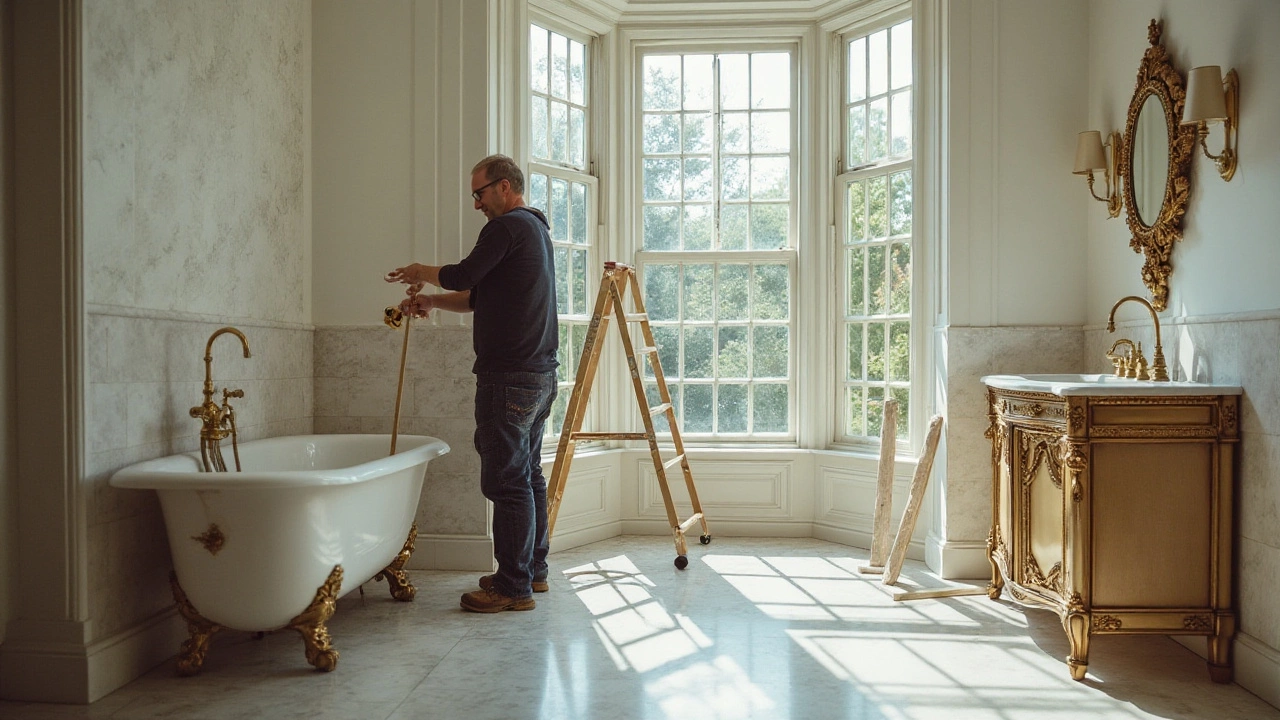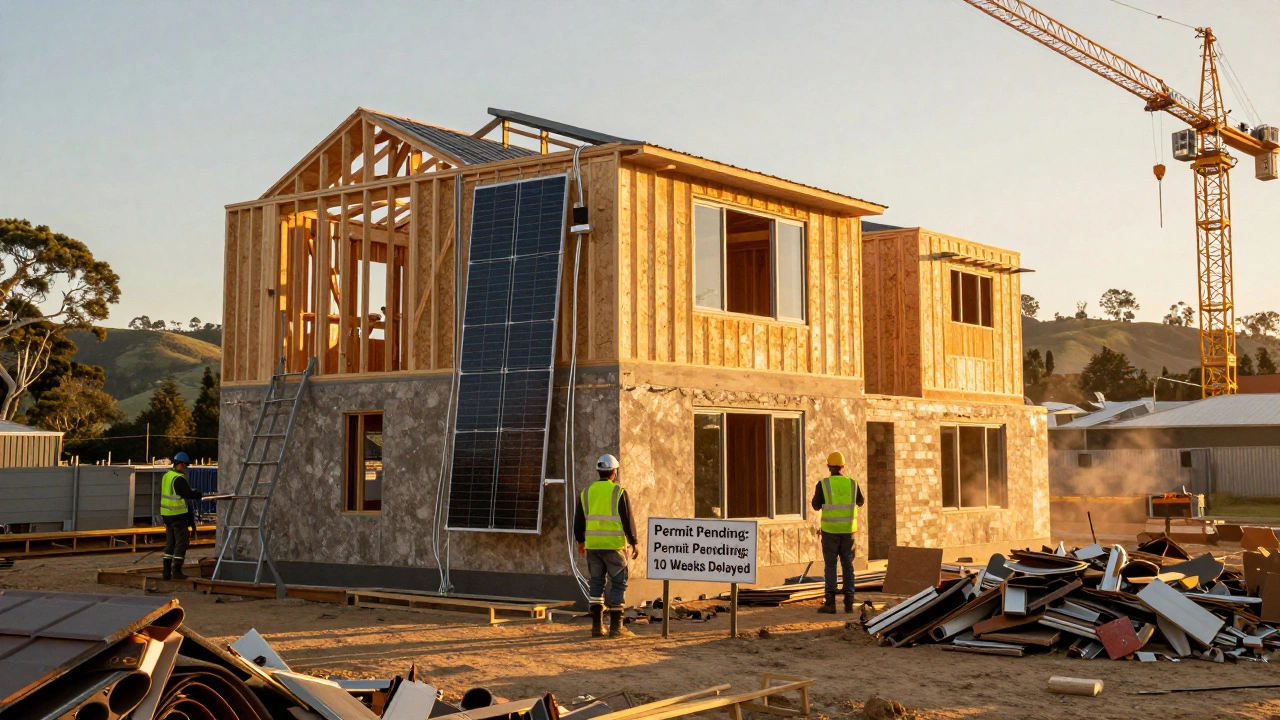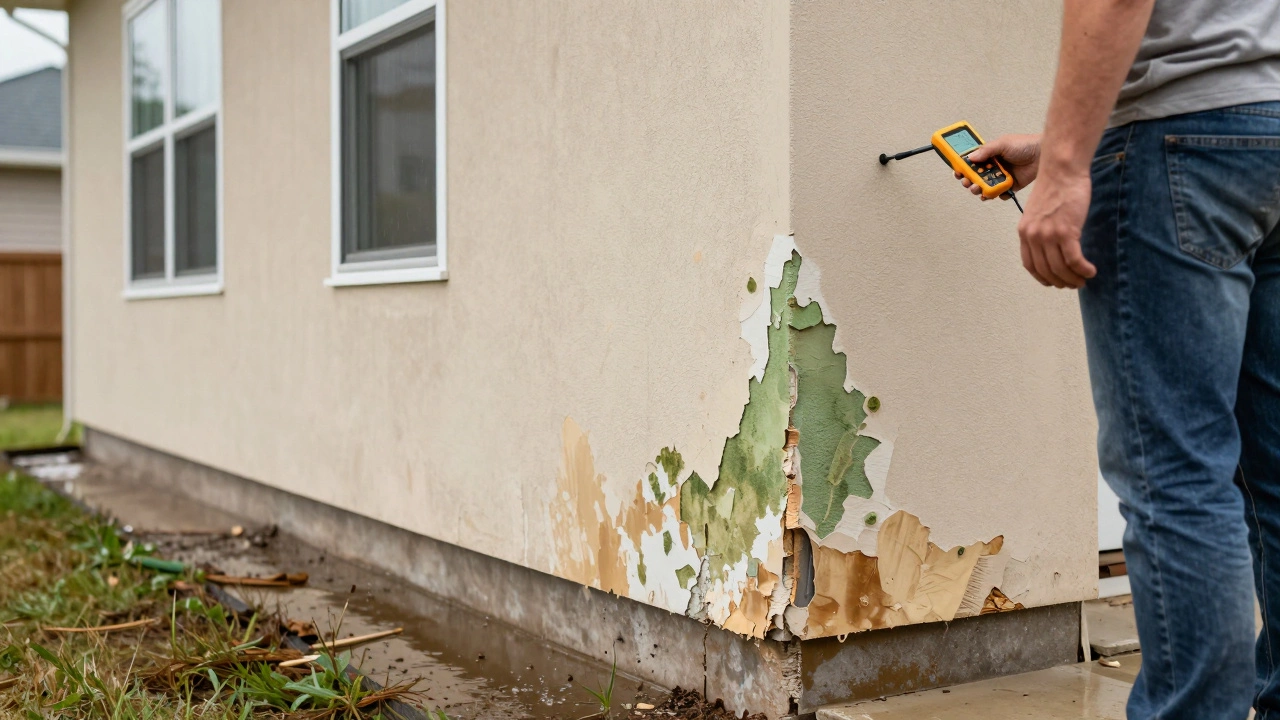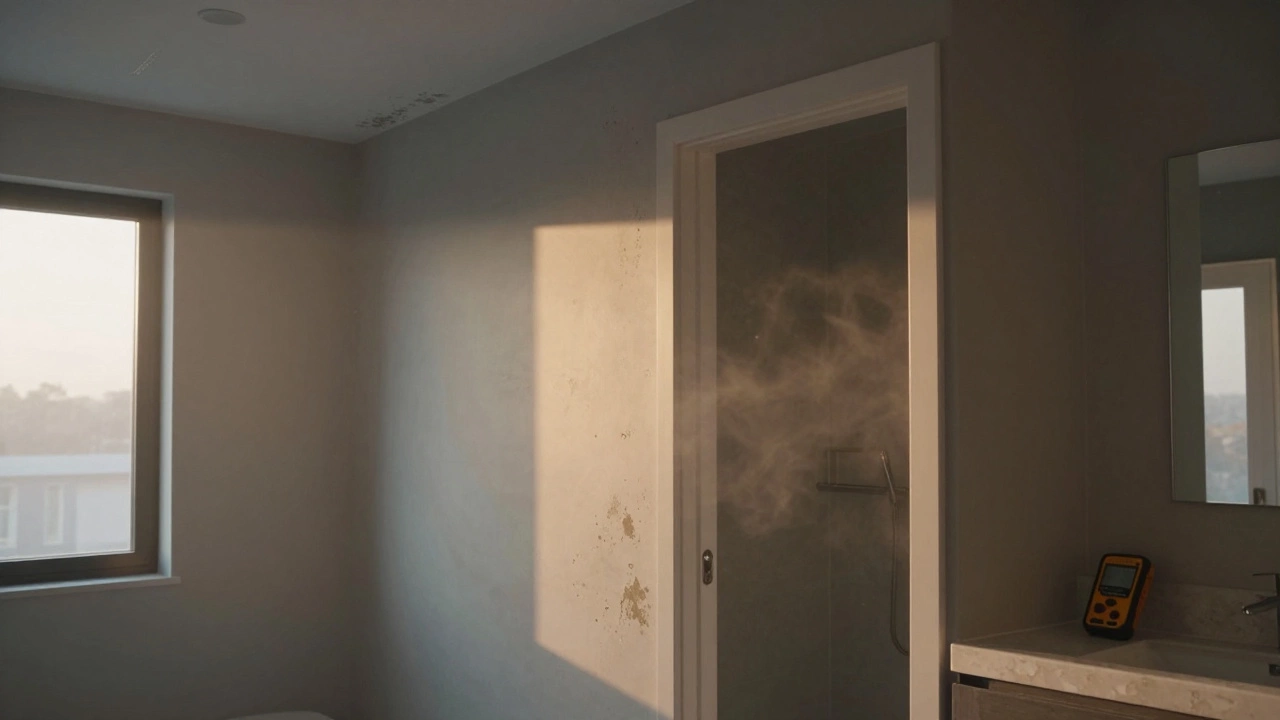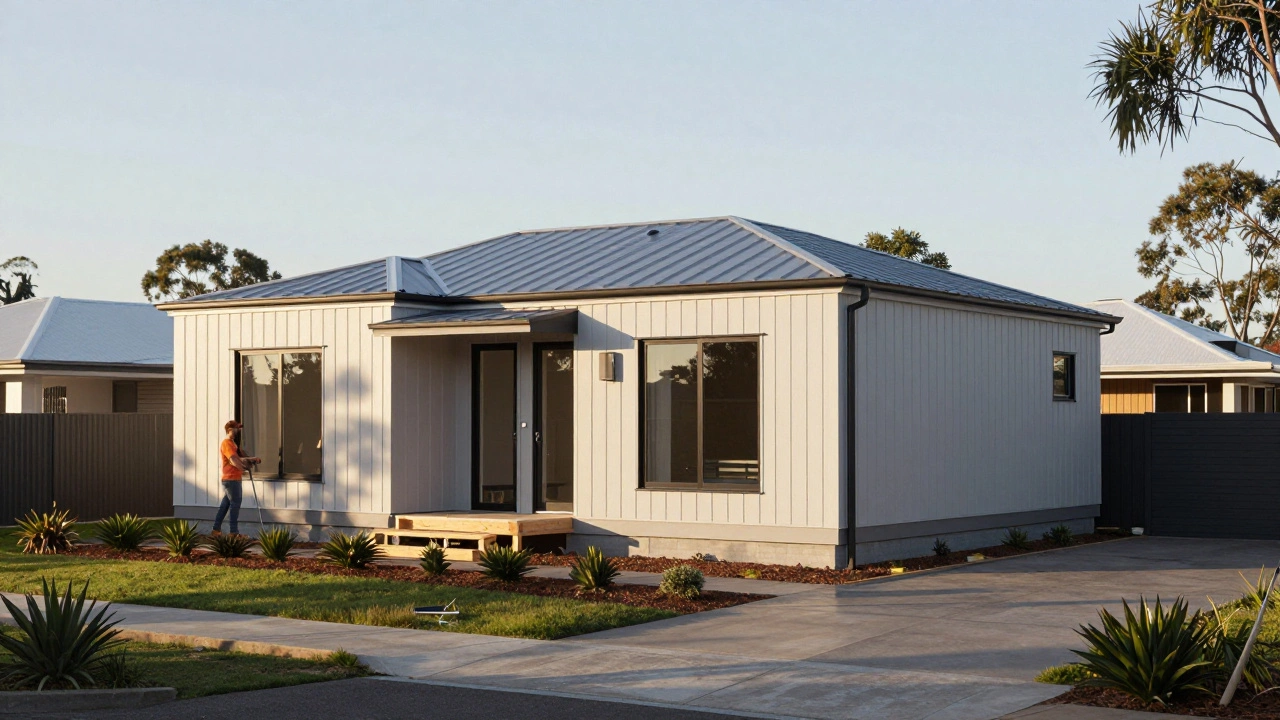Ever wonder why your bathroom renovation quote seems higher than expected? Diving into a home remodeling project often has its surprises, and the bathroom is no exception. In this exploration, we're digging into why the costs can soar, particularly in particular areas of this essential room.
From the price of top-quality fixtures to labor expenses, numerous elements contribute to the final bill. Personal touches like a custom vanity or a waterfall showerhead can significantly impact your budget, turning a simple upgrade into a full-scale investment. Yet, by making informed choices, you can transform your bathroom without breaking the bank.
We'll guide you through the most common cost drivers and share tips to effectively manage your budget, ensuring you'll make the most out of your bathroom renovation journey.
- Demystifying Bathroom Renovation Costs
- Why Fixtures Demand the Most Investment
- Material Quality vs. Cost
- Design Trends Impacting Budget
- Labor Costs: Where They Can Soar
- Tips to Keep Expenses Manageable
Demystifying Bathroom Renovation Costs
Understanding the complexities behind bathroom remodel expenses can save homeowners a significant amount of stress. At its core, transforming this intimate space involves much more than just aesthetics. It requires strategic budget planning, often starting with the most expensive elements like plumbing and fixtures. Plumbing requires a particular mention as it can be one of the sneakiest cost contributors when pieces need relocating. In many cases, labor associated with plumbing alone can devour a considerable percentage of the budget.
It's also crucial to consider the role of design in shaping costs. A sleek, contemporary design often mandates top-end materials, which can easily inflate the financial expectations of the renovation project. Materials were cited in a 2022 report by Remodeling Magazine as accounting for approximately 40-60% of the total cost. Choosing marble instead of porcelain or a unique paint finish instead of regular tiles can shift expenses noticeably.
Another hefty investment often comes in the form of labor costs, which cover hiring skilled professionals to ensure everything is executed flawlessly. Here lies the debate many face on saving versus splurging. Solid workmanship is indispensable if you want your bathroom to remain functional for years without recurring leaks or cracks. “Invest in professionals because their expertise can often save costs associated with poor installations,” says renowned interior designer Sarah Richardson.
Then there are additional elements such as bathroom cabinetry and countertops which require their own planning. Custom cabinetry, for example, gives an elite look but tends to push the cost envelope. Balancing the desire for an upscale appearance with realistic financial plans is a dicey journey for many.
Renovation costs could feel bewildering without navigating these elements skillfully, but understanding these key areas helps streamline what might otherwise be an overwhelming process. As homeowners, it’s wise to identify what matters most—dramatic new looks or the durability of investments—and then map budget allocations accordingly. Knowing where the funds will go provides clarity and helps prevent unwelcome surprises down the line, considerably demystifying what now seems like a daunting task.
Why Fixtures Demand the Most Investment
Embarking on a bathroom remodel can feel like an odyssey, and often, the unforeseen costs come from fixtures. But why do these seemingly simple elements make up such a significant chunk of your budget? Let's dig into the details. Imagine stepping into a slick bathroom with a luxurious bathtub resembling an upscale spa - that elegance comes at a price. High-quality fixtures like premium bathtubs, designer sinks, and rainfall showerheads can dramatically inflate costs. These elements not only enhance the ambiance but also define usability. Often crafted from superior materials like porcelain, brass, or natural stone, these high-end fixtures promise durability but also demand a heavier investment.
Consider the array of choices available. You might opt for a freestanding tub which can range from $500 to well over $5,000 depending on the material and design. Now, think about the shower. Modern innovations like digital temperature control or shower panels with multiple jets aren't just about luxury; they can push costs upwards, transforming a simple morning routine into a lavish experience. Customizations like these tailor your bathroom to personal tastes but add another layer of expense.
Bathroom design trends play a notable role too. As eco-conscious choices become mainstream, fixtures like low-flow toilets and water-saving faucets are in vogue. While initially costly, they offer long-term savings on utility bills. According to a report by the National Association of Home Builders, investing in such fixtures can elevate not just the market value of your home but its environmental footprint too. This makes it a strategic decision, not just a financial one.
"Upgrading to high-end fixtures in a bathroom doesn't just change the space; it elevates lifestyle," says interior design expert Jenna Blakemore. "It's an investment in comfort that pays off."
Durability and Aesthetic Appeal
When choosing fixtures, it's essential to consider both aesthetic appeal and durability. Cheaper fixtures might look appealing at the outset, but over time, the wear and tear can lead to unexpected repairs or replacements. A hefty upfront investment in well-crafted products often saves homeowners headaches and expenses in the long run. You want something that's not just visually pleasing but also dependable.
The design and material of fixtures play a pivotal role in setting the tone of your renovation. Quality remodeling tips often include balancing these two elements. Materials like brass provide a rich, classic look while resisting corrosion, a benefit worth its weight in gold in the humidity of a bathroom. Meanwhile, chic finishes such as brushed nickel or matte black are currently trending and can give your space a modern edge.
Installation Challenges
Lastly, it's imperative to factor in installation costs for these bathroom design wonders. Competitive pricing in the market for fixture installation can fluctuate based on complexity. A lavish bathtub might necessitate structural adjustments or plumbing updates, while wall-mounted sinks require precise fitting. Skilled labor is non-negotiable here – you want professionals able to handle not just the beauty of your products, but their technical nuances.
Homeowners should plan for these potential extra expenses to prevent financial strain. Creative solutions like balancing DIY projects with professional installations can offer budgetary relief while ensuring quality. In the end, your choices here set the foundation for your bathroom's lasting value and everyday comfort.
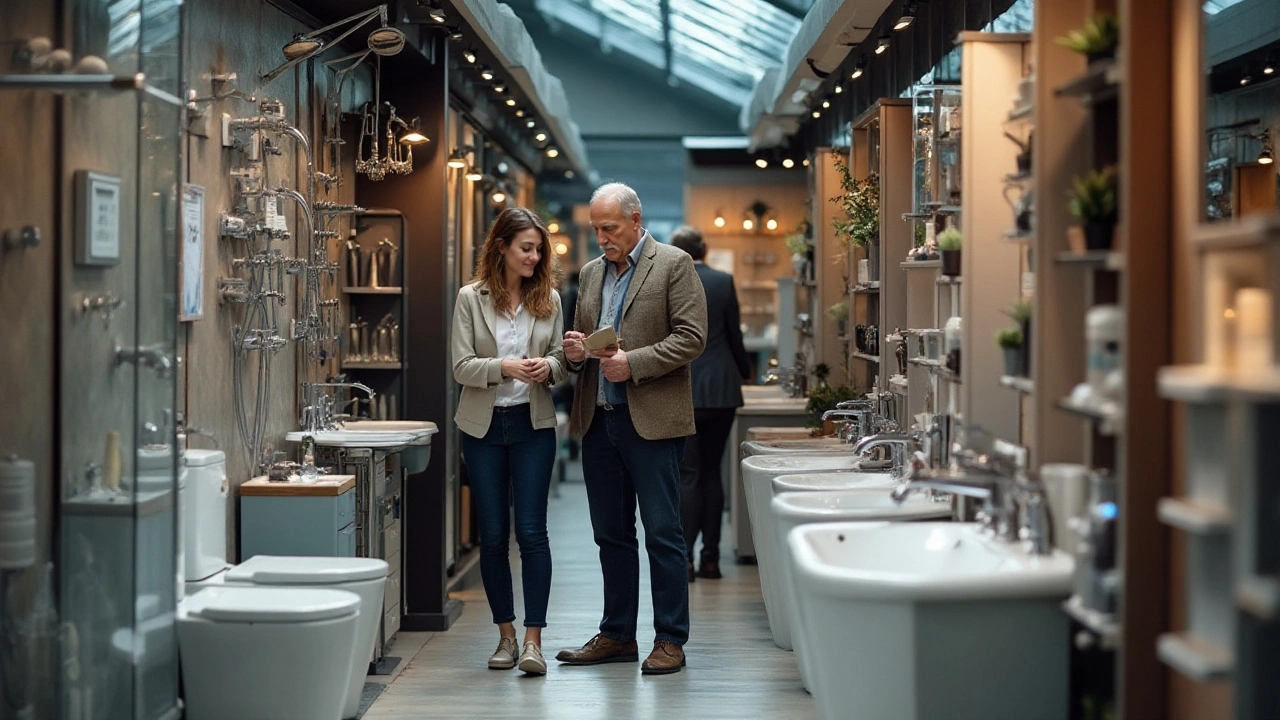
Material Quality vs. Cost
When tackling a bathroom remodel, one crucial consideration is striking a balance between material quality and cost. This part is particularly tricky because, quite often, the allure of premium materials can significantly inflate your budget. For instance, choosing natural stone tiles—a popular choice for both floors and walls—can certainly add a touch of luxury and durability to your space, but their price can be steep, especially when compared to ceramic or porcelain alternatives. Therefore, finding that sweet spot between aesthetic value and practicality is where the challenge lies.
Opting for high-quality materials typically promises longevity and satisfaction. However, the pricing scale for materials such as countertops and cabinetry can vary dramatically based on the material. Quartz countertops, though costly, offer stain resistance and low maintenance which could be seen as a worthwhile investment over cheaper, less durable options like laminate or tiles. Sandy Baudelaire, a well-renowned interior designer, states, "It's often the case that spending more on the front end for materials will save homeowners headaches and potential replacement expenses down the line."
When considering faucets and fixtures, the quality often dictates the cost. High-end brands typically ensure superior construction and an attractive finish that less expensive fixtures may lack. While choices such as brushed nickel or chrome can elevate the visual appeal of your bathroom, opting for solid brass as the core material could extend the life of these fixtures, albeit at a higher initial cost. It’s crucial to assess how often the bathroom is used and judge whether such an investment in quality is warranted.
The variance in the cost of bathroom furnishings like vanities can be startling. Mass-produced options often come at a lower price point but could lack the personalized touch and durability that custom solutions offer. While bespoke vanities crafted from solid wood or even recycled materials might add depth to your bathroom's character, their prices reflect craftsmanship, design, and the quality of materials used. DIY enthusiasts occasionally find vintage treasures at thrift stores or flea markets, repurposing them into unique vanities while saving a chunk of cash.
When planning your renovation cost, making informed decisions about where to splurge and where to save can lead not only to significant financial savings but also to creating a space that you'll love and that functions well for your needs. Investing wisely in elements that offer both aesthetic and practical benefits can yield the best returns, turning your new bathroom into a sanctuary without the remorse of having shattered the budget.
Design Trends Impacting Budget
Stepping into the world of bathroom remodels, it's clear how design trends can deeply sway the financial side of things. With trends swiftly evolving, keeping up can sometimes inflate budgets unexpectedly. Take, for instance, the recent upsurge in demand for spa-like bathrooms. More homeowners are opting for intricate tilework, underfloor heating, and rain showers, elevating not just the aesthetics, but also the remodeling cost. Craftsmanship plays a pivotal role here, and the precision required for laying complex tiles often adds an extra layer of expense. This shift towards lavish and tranquil designs has been akin to bringing a piece of luxury resort right into one's home.
Another trend making waves is the incorporation of technological advancements within the bathroom space. Smart mirrors, which integrate features like LED lighting, defoggers, and even Bluetooth connectivity, have become a modern staple, albeit at a price. These futuristic fixtures aren't just a trend—they're becoming a necessity for many tech-savvy households inclined towards convenience and efficiency. Similarly, eco-friendly fittings, like low-flow toilets and water-saving showerheads, are being prioritized. While they promise savings on water bills over time, their initial installation can stretch the wallet.
Let's not forget the appeal of bespoke bathrooms, where personalization can indeed be the biggest budget-buster. Customized vanities with marble countertops, or artisan-crafted basins, reflect a personal sense of style. It's not merely about functionality; it's about making a statement. "Customization transforms a bathroom from ordinary to extraordinary, and true luxury lies in the details," reads a quote in a recent design magazine. While these unique pieces will make guests' jaws drop, they also require thoughtful budgeting to ensure the project doesn't spill over financially.
Beyond individual elements, it's worth considering the broader architectural trends influencing bathroom design. Open-concept showers, for example, have become quite popular, demanding significant plumbing adjustments and extensive water-proofing efforts. This style eliminates barriers, allowing a more cohesive flow but with increased labor and material costs. Meanwhile, minimalist designs focusing on sleek lines and uncluttered spaces can appear deceivingly simple. Often, these require hidden storages and intricate planning, inadvertently expanding the budget. Considering these aspects helps in setting realistic financial expectations.
Despite these trends' sublime allure, navigating them with a wise outlook can save both time and expenses. For instance, exploring alternative materials that provide a similar look and feel—like high-quality vinyl flooring instead of natural stones—can be an economically savvy move. Leveraging the expertise of a skilled interior designer can also turn potential pitfalls into triumphs, guiding homeowners towards solutions that balance style with practical budgeting.
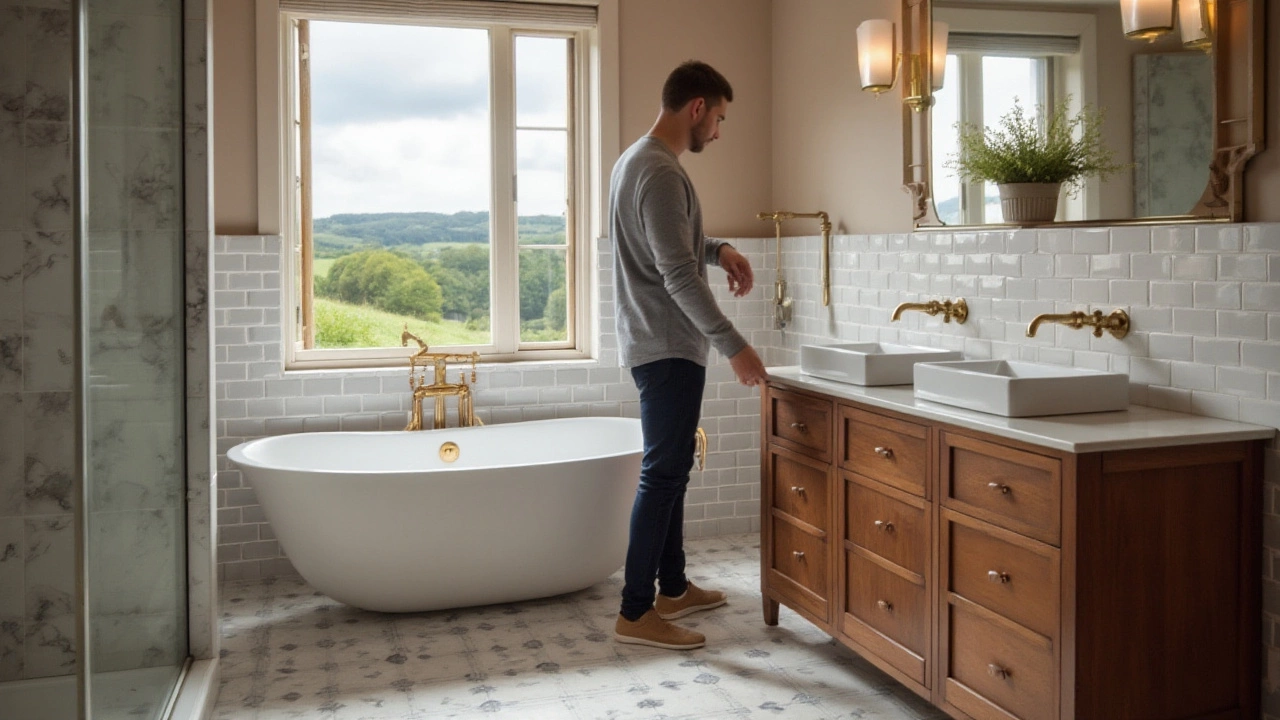
Labor Costs: Where They Can Soar
When embarking on a bathroom remodel, one might assume purchasing materials would dominate the budget. While it's true that fixtures and finishes contribute considerably to costs, labor expenses often emerge as a substantial surprise, skyrocketing as plans transition from paper to practice. Various elements drive these labor costs up, and it's vital to understand them to manage your renovation project effectively.
Laying the initial groundwork, such as demolishing the existing setup, doesn't just involve physical labor. Skilled professionals are required who understand water lines and electrical circuits, ensuring no critical elements are damaged. This phase's complexities often mean that paying more for seasoned professionals avoids costly mishaps later. Once the space is ready, installing new plumbing can be equally daunting. Every pipe and valve must align perfectly for a seamless function and appearance. According to a report by HomeAdvisor, plumbing alone can account for up to 15% of the total remodeling cost.
An often overlooked but pivotal part is tile work. Skilled tiling not only impacts aesthetics but is crucial for waterproofing. Cutting, arranging, and setting tiles with precision prevents future leaks and issues. Custom designs or intricate patterns require more time and skill, hence increasing labor fees. As Mark Miller, a well-regarded contractor, noted in House Beautiful, "Tile work is both an art and a science, where precision meets patience." This underscores the nuanced craftsmanship behind what might appear as simple upgrades.
"Hiring experts ensures quality, saving you potential heartaches and extra expenses," cautions home renovation guru, Bob Vila, well-known for his practical insights into home improvement.
Beyond the visible, the unseen work also carries hefty costs. Electrical updates, adjustments to lighting fixtures, installation of ventilation systems – each require specialists to ensure safety and compliance with local regulations. The meticulous nature of these tasks demands both time and expertise, contributing to rising expenses.
Clearly, choosing the right professionals becomes imperative not only for craftsmanship but to manage timelines effectively. Delays can compound costs swiftly, not just through direct fees but also via the inconvenience of a prolonged remodel. A team that has cohesion and works efficiently as a single unit can be the difference between a budget-friendly experience and a financial drain.
To keep labor costs within a reasonable range, one practical tip is to consolidate similar tasks. For instance, if you're replacing plumbing, it might be an ideal opportunity to update the electrical systems simultaneously. Dovetailing these tasks can save time and effort, reducing labor charges significantly. Another way is to prepare the site in advance, tackling some demolition or cleanup yourself if feasible. However, it's essential to have a thorough discussion with your contractor to ensure what you can do without compromising quality or safety.
Tips to Keep Expenses Manageable
Embarking on a bathroom remodel can feel like opening Pandora's box of expenses, but, with strategic planning, you can cruise through without sinking your financial ship. The first key step is developing a realistic budget that considers not only materials but also labor, unexpected fees, and a sprinkle of aesthetic indulgences that you might fancy. To ensure you're not caught off guard, always allocate an additional 10-15% for surprises that pop up unexpectedly, like outdated plumbing or electrical issues that arise during the renovation process.
One practical way of managing costs is focusing on what truly needs replacing versus what can be refurbished. For instance, if your bathroom cabinets are still in good shape, consider repainting them instead of purchasing brand new ones. Likewise, tile resurfacing can provide a fresh look at a fraction of the cost of new tiles. Don’t shy away from making compromises on brand names if the quality level is comparable. Often, lesser-known brands offer durable yet economical alternatives, allowing you to allocate more of your budget toward show-stopping features like a high-efficiency shower or a statement vanity.
When it comes to tending to fixtures, many homeowners believe they need to go all out to achieve a luxury feel. However, the truth is, you don’t need to blow your budget to have a stunning bathroom. Pairing high-end fixtures with more affordable options can create a balanced and stylish look. Consider investing in a showpiece faucet or a modern sink but opt for lower-cost tiles or vanities. Even something as simple as changing light fixtures or switching up handles and knobs can radically transform the space with little financial impact.
Labor costs are another heavyweight champion in the bathroom renovation arena. Engaging with seasoned professionals certainly offers peace of mind, but there are instances where taking a bit of DIY spirit could save a substantial amount. Tasks like painting walls or installing accessories like towel racks could be undertaken personally if you have the know-how or are up for learning. However, bear in mind that plumbing and electrical tasks are best left to professionals due to safety and code compliance reasons. Sourcing multiple quotes and understanding what's included within each can also reveal savings opportunities.
"The bathroom is one of those places that we upgrade less often, so getting the design and functionality right is crucial," advises Sarah Baeumler, a renowned interior designer known for her expertise in family-friendly luxury spaces. Her insights remind us of the importance of balancing immediate aesthetics with long-term usability.
Finally, be mindful of trends. While it might be tempting to jump on the latest design bandwagon, these trends can quickly change, leading to potential dissatisfaction down the road. Instead, lean towards timeless design elements that offer enduring appeal, which often harmonize better with the existing home décor and increase the home's value in the long haul.

